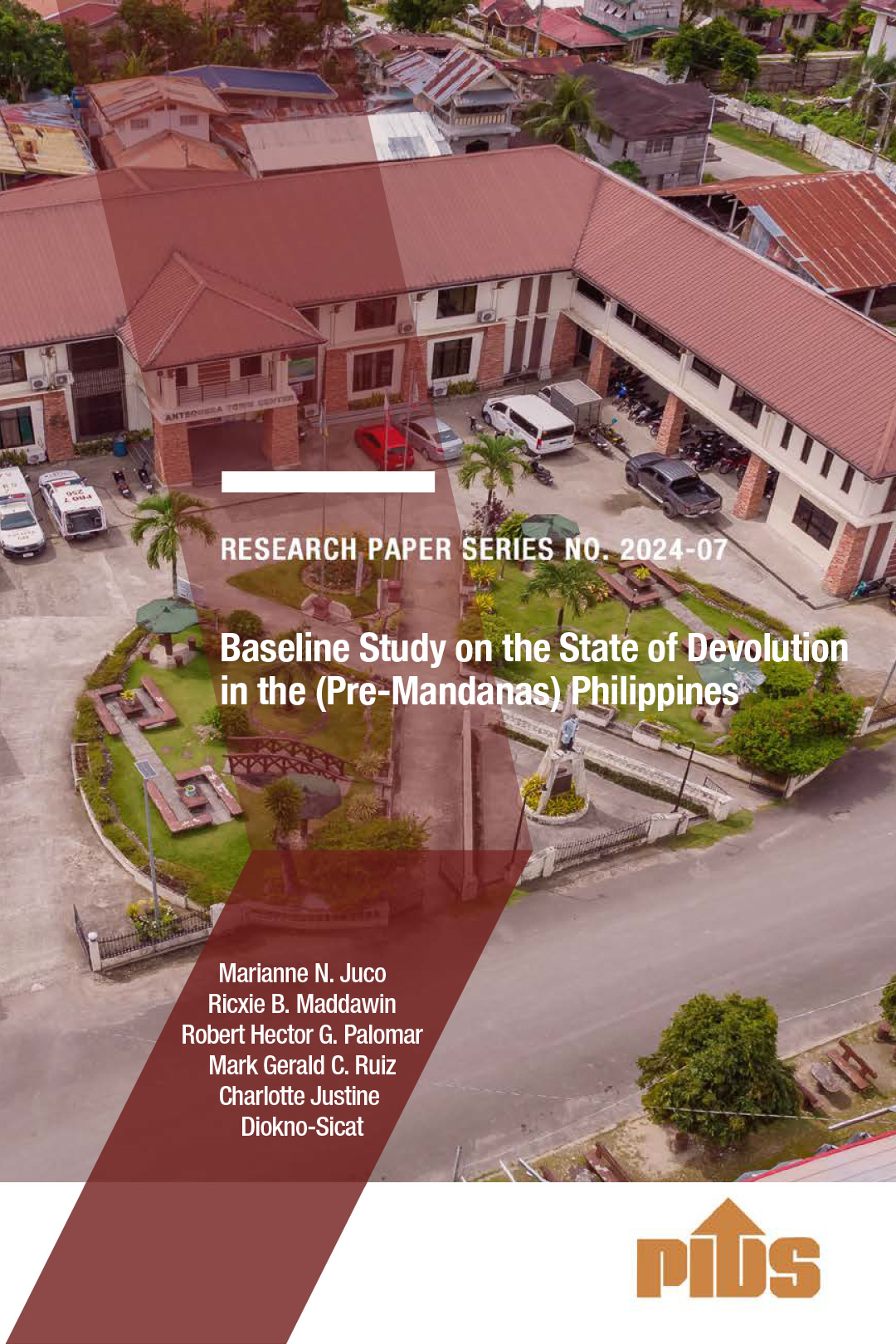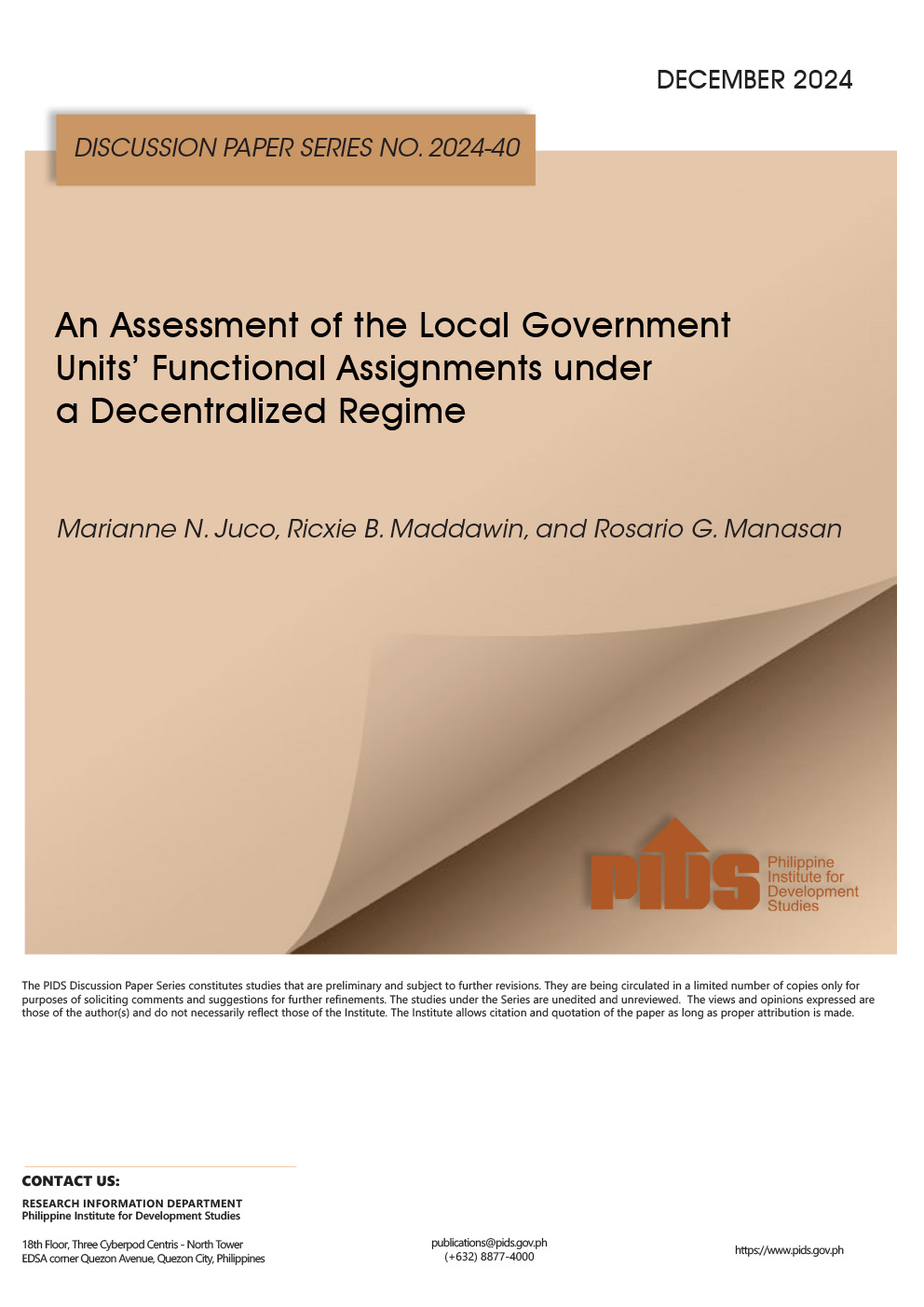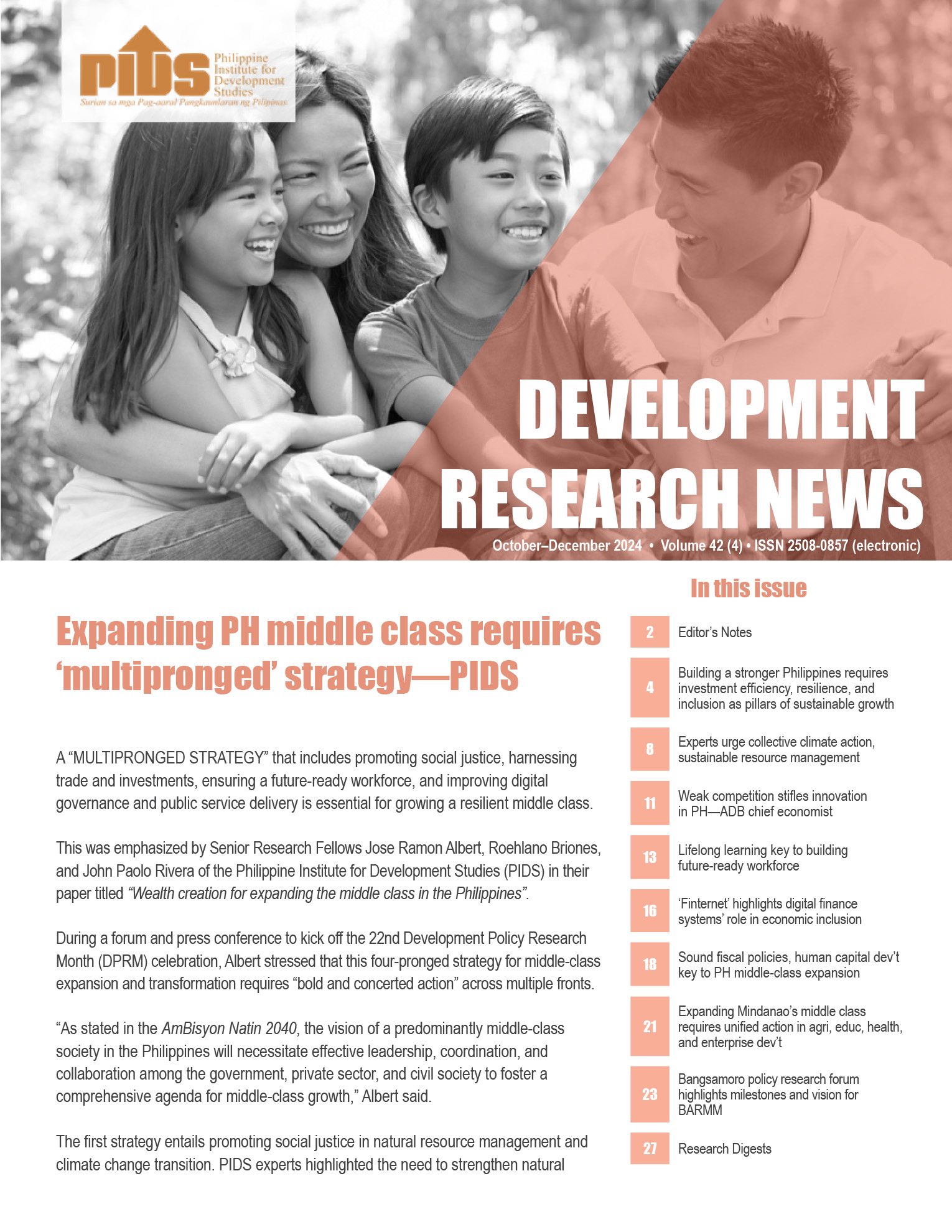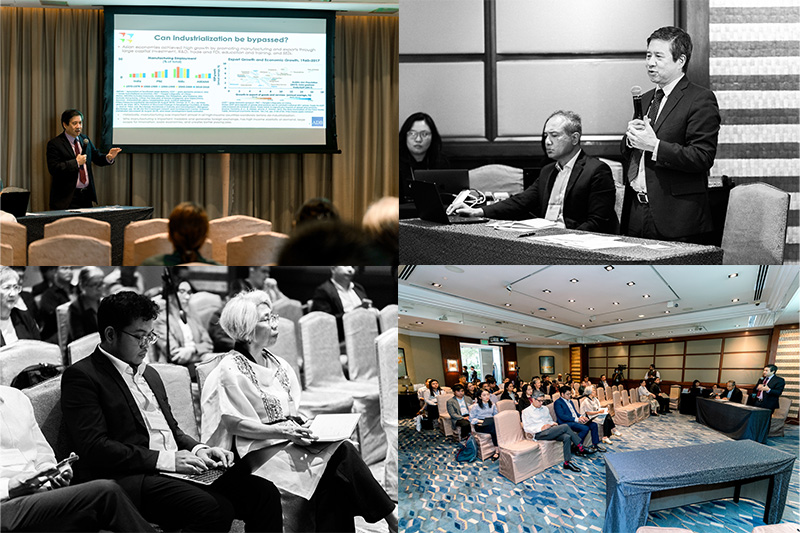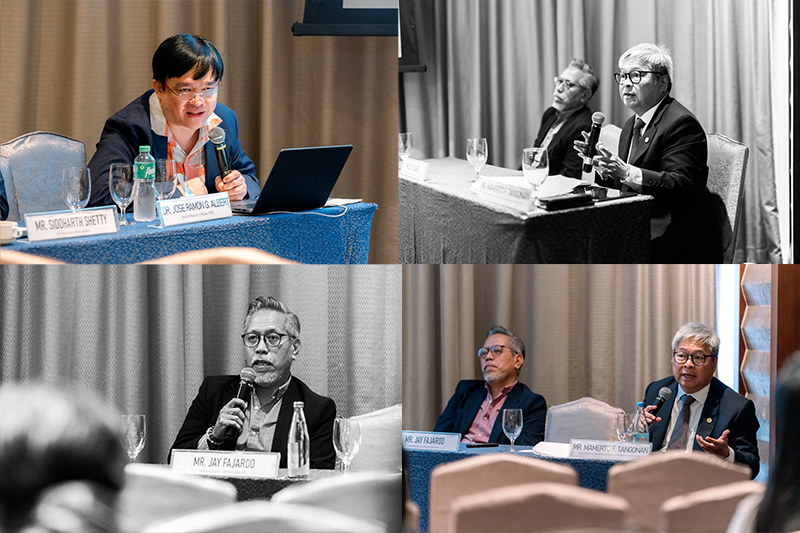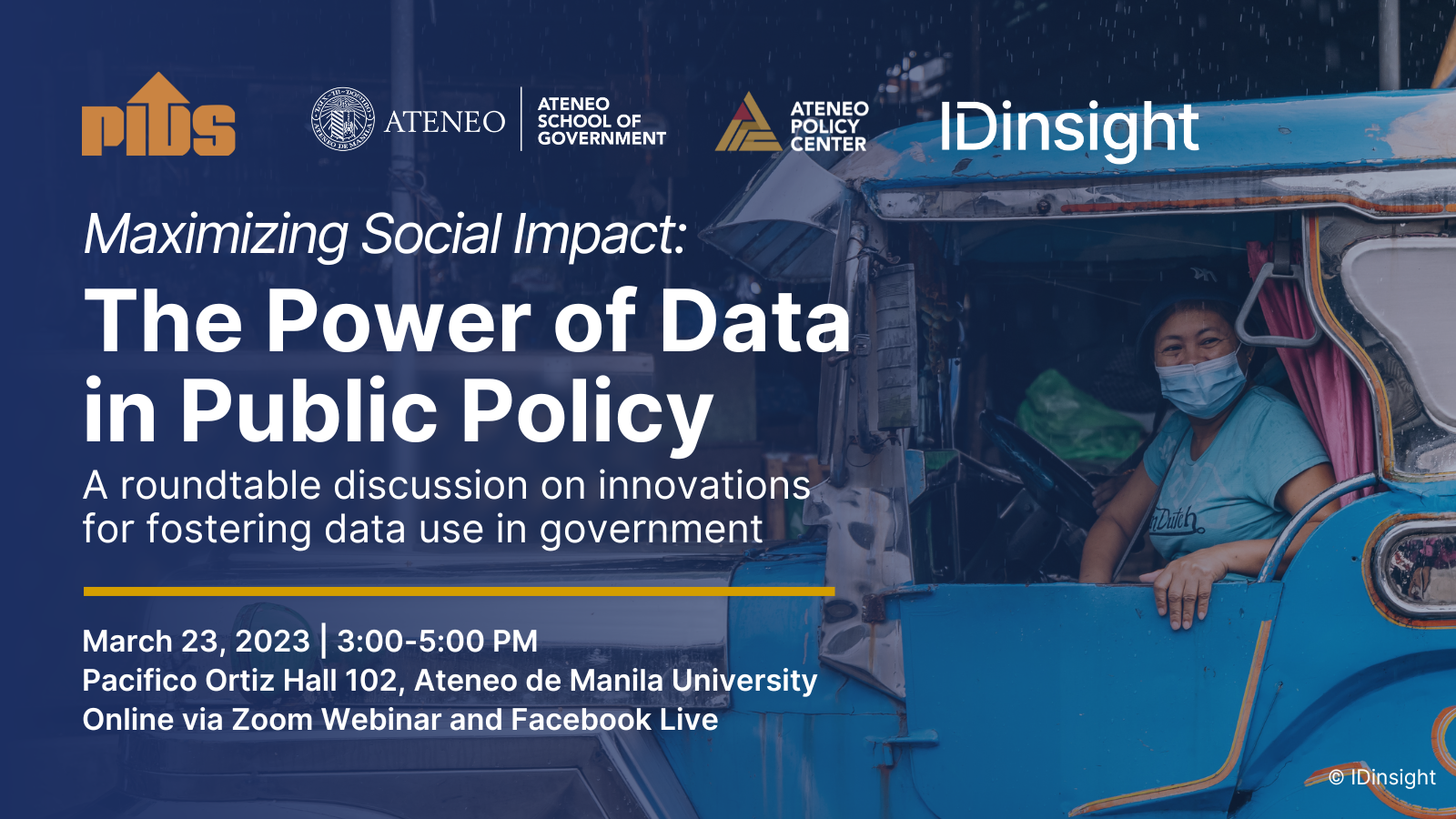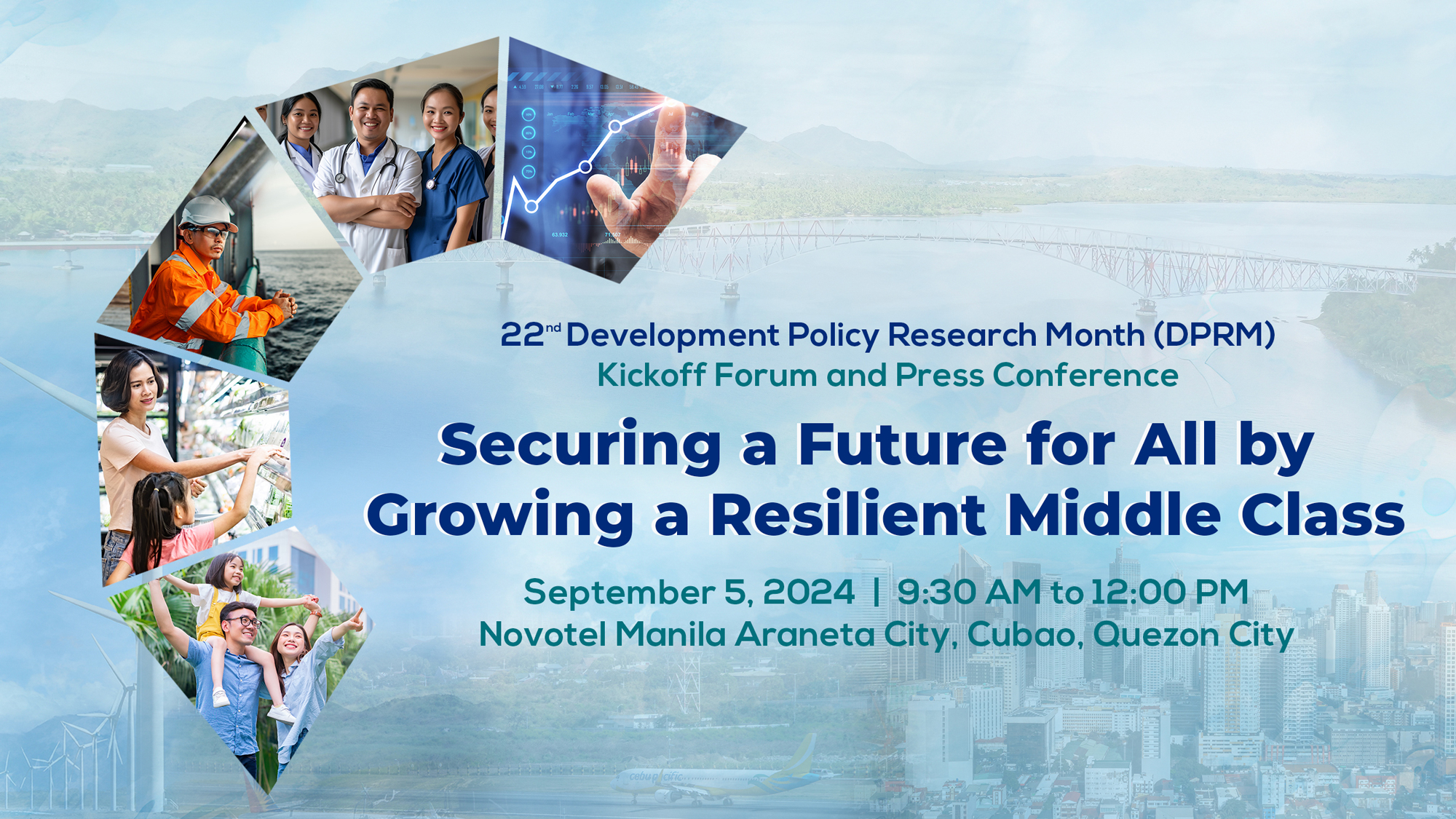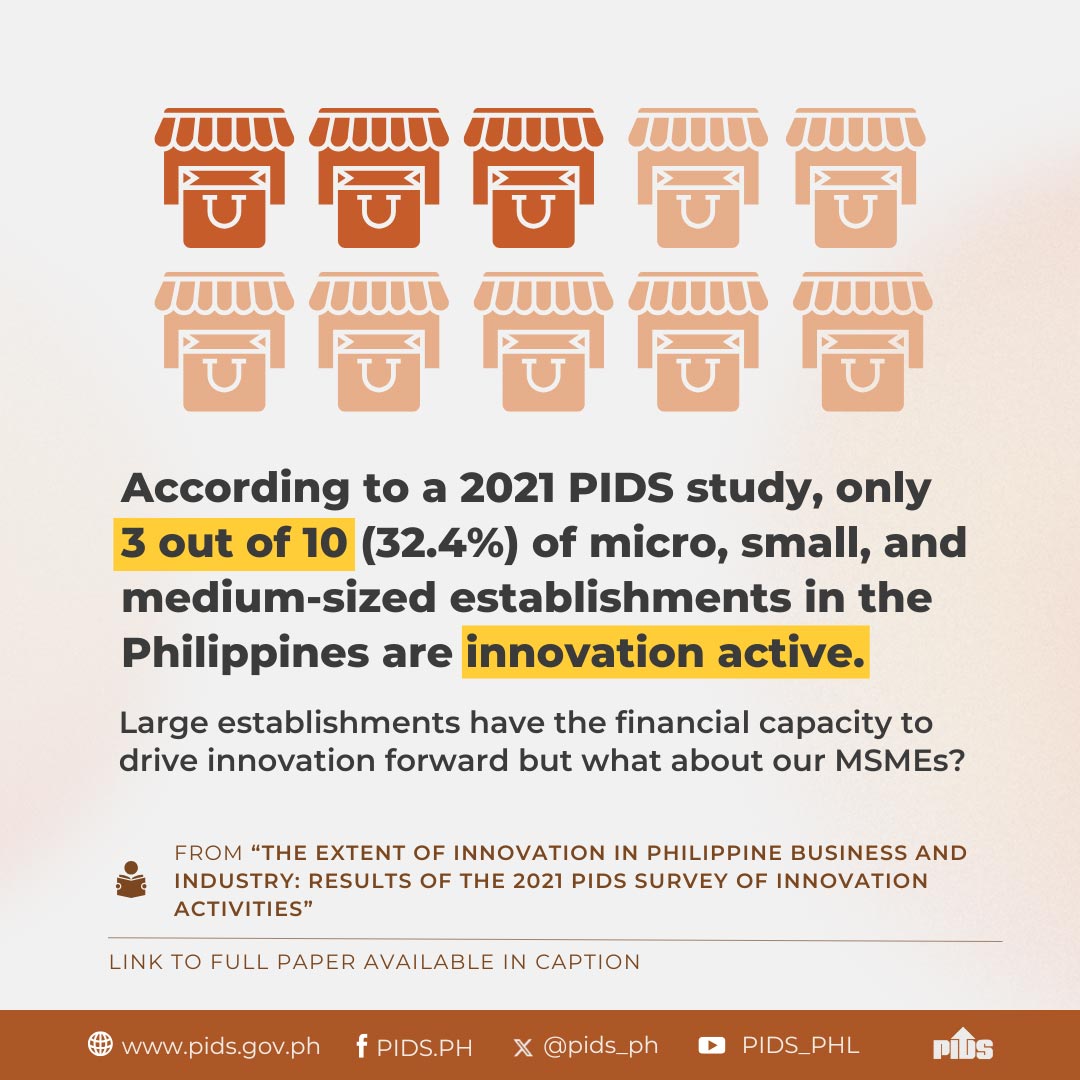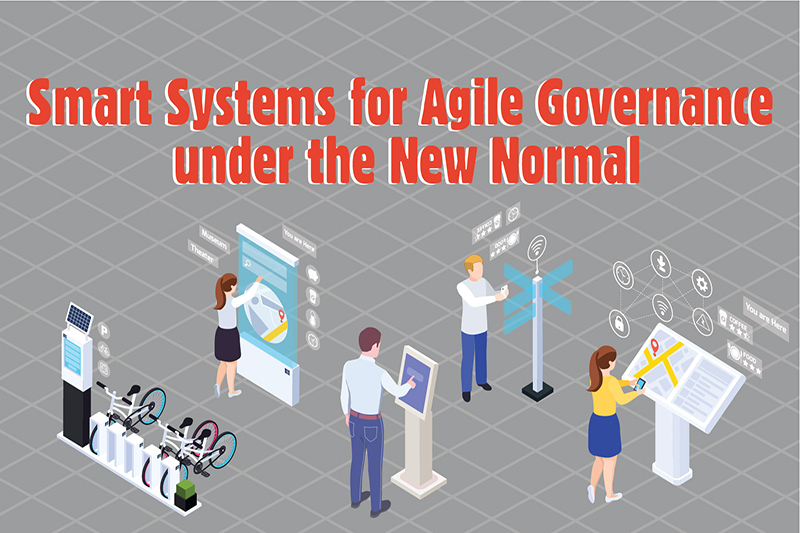
Both national and local governments should adopt smart solutions and invest in emerging technologies to deal with risks such as climate change, natural hazards, and the COVID-19 pandemic.
This is according to Aubrey Tabuga, Sonny Domingo, Charlotte Justine Sicat, and Valerie Gilbert Ulep, researchers at state think tank Philippine Institute for Development Studies (PIDS), in their discussion paper titled “Innovating Governance: Building Resilience Against COVID-19 Pandemic and Other Risks”.
The study noted that the rising population and rapid urbanization demand the adoption of more “process, product, organizational, and communication innovations” and smart reforms to address environmental concerns, socioeconomic problems, and other related issues.
For local governments, the provision of critical services to the public, “particularly in the sectors of public health, agriculture, and social welfare”, required smart solutions that “can provide digital avenues for health consultation, agricultural extension and research, and social protection and monitoring”.
In Metro Manila, the limited availability of land requires “product innovations through reclamation projects and vertical property developments”. Smart innovations are also needed to mitigate the adverse effects of these reclamation projects, which may pose a more significant threat to the environment and livelihood of people living in the coastal areas of Mega Manila, according to the study.
While there has been progress in the country’s digital governance indices in recent years, particularly on e-participation, e-government, online service, and e-infrastructure, the study identified human capital index as an area for improvement.
Despite this weakness, some local governments have adopted e-governance platforms to improve public safety and service delivery.
The establishment of the Public Safety and Security Command Centre (PSSCC) in Davao City is a good example of applying ICT infrastructure and innovation in local governance. The PSSCC uses an “array of technological tools, including a city-wide CCTV surveillance system and real-time data mapped out in GIS” to maintain peace and order and respond to emergencies and calamities quickly.
Most cities in Metro Manila also employ smart ICT innovations through their respective command centers. Real-time closed-circuit television (CCTV) monitoring are also present in most areas of the city.
At the national level, the National Disaster Risk Reduction Management Council operates an Intelligent Operations Center that connects its 17 regional offices for up-to-date video, audio, and data communications feed on the ground.
As most agencies in the executive branch have their versions of ICT-based command facilities, “digital sharing and integration” of systems is essential, “while taking into consideration security and data privacy issues”.
To harmonize and ensure interoperability among ICT-related resources, programs, and projects across government, the Department of Information and Communications Technology is finetuning the E-Government Masterplan 2022. This aims to enhance “organizational and inter-governmental coordination, and address personnel and capability issues in utilizing ICTs for more efficient operations, public service delivery”, and support business to perform more effectively.
In the ASEAN region, Singapore is famous for its “Smart Nation”, which promotes digital innovation and technology to achieve growth and sustainability. Their experience in the Severe Acute Respiratory Syndrome outbreak in 2003-2004 served as the foundation for the COVID-19 pandemic response.
South Korea also used smart governance to mitigate the impacts of COVID-19. The government installed an IT-based protocol using ICT devices to aid in contact tracing procedures.
In Manchester, United Kingdom, the British government required a strong integration between environment protection and digital modernization to prevent the ill effects of climate change.
Cities like Amsterdam, Barcelona, and New York also succeeded in solving urban problems by not solely depending on technology but also by creating spaces for innovation and citizen participation.
For the Philippines to achieve smart governance through smart cities like these countries, the authors urged the government to develop the human capital alongside the physical infrastructure, as smart approaches rely on investments on both hard and soft infrastructures.
Adopting smart solutions as a way to innovate governance will be discussed in the Annual Public Policy Conference (APPC) webinar titled “Smart systems for agile governance under the new normal” on September 24, 2020. The APPC is the culminating activity of the Development Policy Research Month (DPRM) spearheaded by state think tank PIDS every September. ###
This is according to Aubrey Tabuga, Sonny Domingo, Charlotte Justine Sicat, and Valerie Gilbert Ulep, researchers at state think tank Philippine Institute for Development Studies (PIDS), in their discussion paper titled “Innovating Governance: Building Resilience Against COVID-19 Pandemic and Other Risks”.
The study noted that the rising population and rapid urbanization demand the adoption of more “process, product, organizational, and communication innovations” and smart reforms to address environmental concerns, socioeconomic problems, and other related issues.
For local governments, the provision of critical services to the public, “particularly in the sectors of public health, agriculture, and social welfare”, required smart solutions that “can provide digital avenues for health consultation, agricultural extension and research, and social protection and monitoring”.
In Metro Manila, the limited availability of land requires “product innovations through reclamation projects and vertical property developments”. Smart innovations are also needed to mitigate the adverse effects of these reclamation projects, which may pose a more significant threat to the environment and livelihood of people living in the coastal areas of Mega Manila, according to the study.
While there has been progress in the country’s digital governance indices in recent years, particularly on e-participation, e-government, online service, and e-infrastructure, the study identified human capital index as an area for improvement.
Despite this weakness, some local governments have adopted e-governance platforms to improve public safety and service delivery.
The establishment of the Public Safety and Security Command Centre (PSSCC) in Davao City is a good example of applying ICT infrastructure and innovation in local governance. The PSSCC uses an “array of technological tools, including a city-wide CCTV surveillance system and real-time data mapped out in GIS” to maintain peace and order and respond to emergencies and calamities quickly.
Most cities in Metro Manila also employ smart ICT innovations through their respective command centers. Real-time closed-circuit television (CCTV) monitoring are also present in most areas of the city.
At the national level, the National Disaster Risk Reduction Management Council operates an Intelligent Operations Center that connects its 17 regional offices for up-to-date video, audio, and data communications feed on the ground.
As most agencies in the executive branch have their versions of ICT-based command facilities, “digital sharing and integration” of systems is essential, “while taking into consideration security and data privacy issues”.
To harmonize and ensure interoperability among ICT-related resources, programs, and projects across government, the Department of Information and Communications Technology is finetuning the E-Government Masterplan 2022. This aims to enhance “organizational and inter-governmental coordination, and address personnel and capability issues in utilizing ICTs for more efficient operations, public service delivery”, and support business to perform more effectively.
In the ASEAN region, Singapore is famous for its “Smart Nation”, which promotes digital innovation and technology to achieve growth and sustainability. Their experience in the Severe Acute Respiratory Syndrome outbreak in 2003-2004 served as the foundation for the COVID-19 pandemic response.
South Korea also used smart governance to mitigate the impacts of COVID-19. The government installed an IT-based protocol using ICT devices to aid in contact tracing procedures.
In Manchester, United Kingdom, the British government required a strong integration between environment protection and digital modernization to prevent the ill effects of climate change.
Cities like Amsterdam, Barcelona, and New York also succeeded in solving urban problems by not solely depending on technology but also by creating spaces for innovation and citizen participation.
For the Philippines to achieve smart governance through smart cities like these countries, the authors urged the government to develop the human capital alongside the physical infrastructure, as smart approaches rely on investments on both hard and soft infrastructures.
Adopting smart solutions as a way to innovate governance will be discussed in the Annual Public Policy Conference (APPC) webinar titled “Smart systems for agile governance under the new normal” on September 24, 2020. The APPC is the culminating activity of the Development Policy Research Month (DPRM) spearheaded by state think tank PIDS every September. ###

